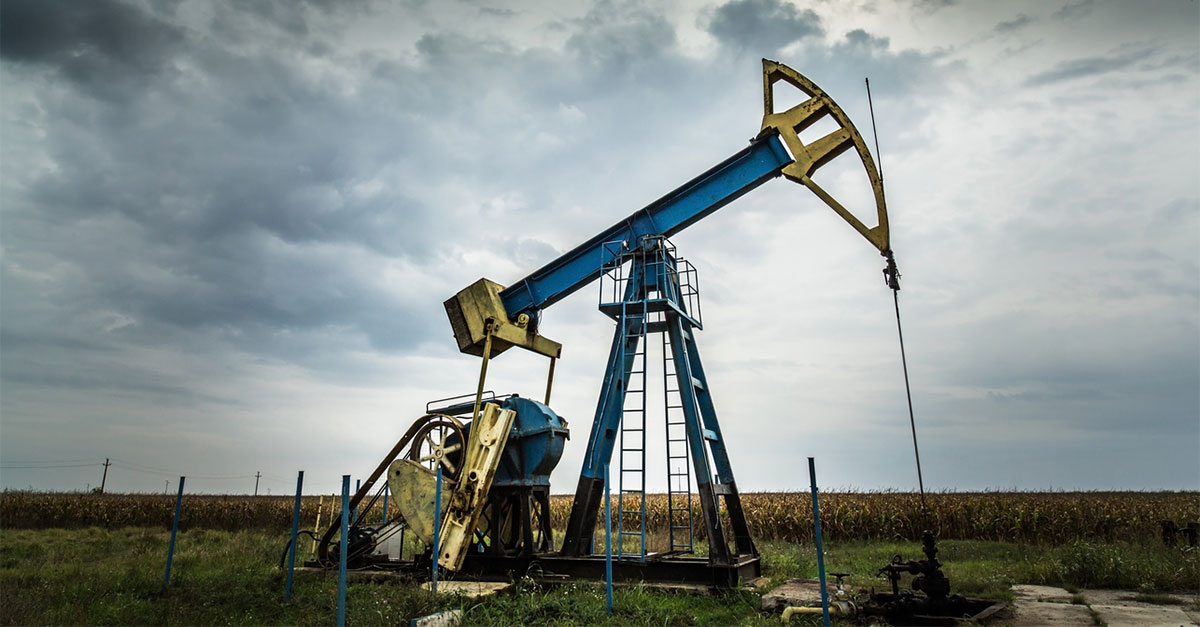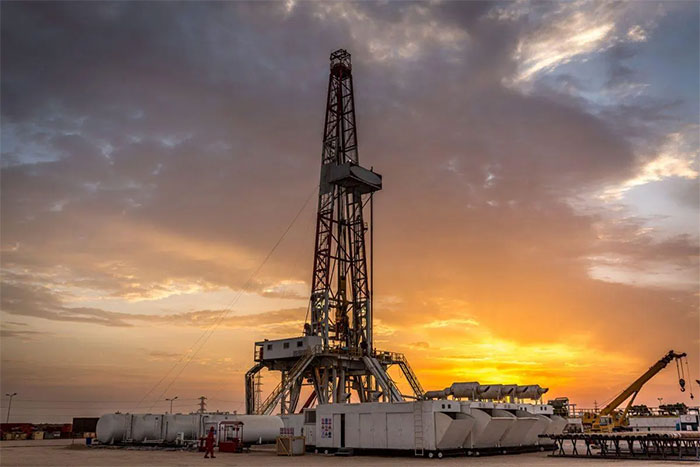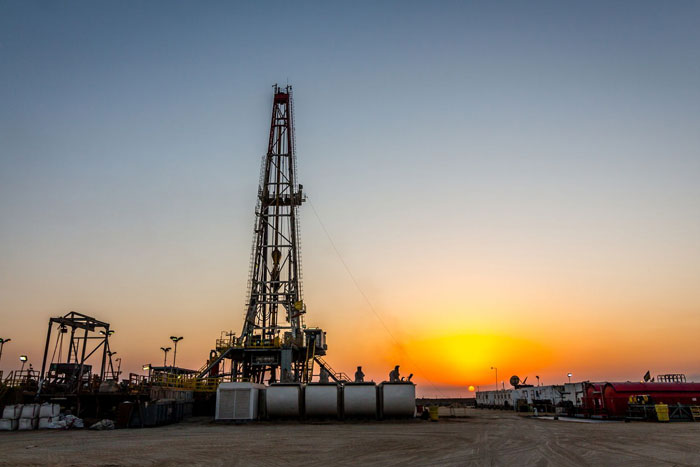
Fracking, or hydraulic fracturing, is a technique used to extract natural gas and oil from deep underground rock formations. It involves the injection of fluids at high pressure to create fractures in the rock, allowing for the release and extraction of fossil fuels.
Fracking has been both praised for its contributions to energy production and criticized for its potential environmental and social impacts. The practice continues to be a subject of intense debate and regulation in many countries.
In this article, you will learn about fracking history, how it works, its benefits, and the use of geomembranes (that are geosynthetic products) in hydraulic fracturing.
How does fracking work?
Fracking, short for hydraulic fracturing, is a technique used to extract natural gas and oil from deep underground rock formations. Here’s a simplified explanation of how fracking works:
- Well Drilling: A well is drilled vertically into the earth, typically thousands of feet below the surface, until it reaches the target rock formation containing the oil or gas.
- Cementing: Steel casing is inserted into the drilled well and cemented in place to create a barrier between the well and surrounding rock layers, preventing the migration of fluids.
- Fracturing Fluid Injection: A mixture of water, sand, and chemical additives, known as fracturing fluid, is pumped down the well at high pressure. The fluid is directed to the target rock formation.
- Fracturing the Rock: The high-pressure fracturing fluid creates fissures or fractures in the rock formation, extending outwards from the wellbore. The sand particles in the fluid enter the fractures and hold them open, allowing for the flow of oil or gas.
- Fluid Recovery: Once the fracturing process is complete, the pressure is reduced, and much of the injected fluid returns to the surface along with the extracted oil or gas. This mixture is known as flowback fluid.
- Well Production: After the fracturing fluid is recovered, the well enters the production phase. The oil or gas flows from the fractured rock formation into the wellbore and is then brought to the surface for collection and processing.
Read more: What are geosynthetics?
Hydraulic fracturing history: Is it a new process?
Hydraulic fracturing, or fracking, is not a new process. It has been used in the oil and gas industry since the mid-20th century. The technique was first developed and commercially applied in the late 1940s and early 1950s to increase the productivity of oil and gas wells.
Over the years, advancements in drilling technology and hydraulic fracturing techniques have expanded the use of fracking. The combination of horizontal drilling (drilling horizontally within the rock formation) and hydraulic fracturing has significantly increased the extraction of oil and gas from previously uneconomical reservoirs, such as shale formations.
The widespread use of hydraulic fracturing for extracting natural gas from shale formations began in the United States in the early 2000s. The development of shale gas resources, particularly in regions like the Marcellus Shale and the Barnett Shale, led to a significant increase in natural gas production.
While hydraulic fracturing has a long history, its recent expansion and the associated environmental and social concerns have brought it into the public spotlight and prompted increased regulation and scrutiny in many countries.
Read more: Ground improvement with geosynthetics
Benefits of hydraulic fracturing: Is fracking good or bad for us?
The question of whether hydraulic fracturing, or fracking, is good or bad is a complex and highly debated topic. It is important to consider both the potential benefits and the associated risks and impacts. Here are some key points regarding the benefits of hydraulic fracturing:
- Energy Production: Fracking has significantly increased the production of natural gas and oil, contributing to energy security and reducing reliance on foreign imports. It has helped unlock previously inaccessible resources, such as shale gas and tight oil, leading to increased domestic energy production.
- Economic Benefits: The expansion of fracking has created jobs and stimulated economic growth in regions with substantial shale reserves. It has led to investments in infrastructure, increased tax revenues, and provided economic opportunities for communities associated with the oil and gas industry.
- Energy Transition: Natural gas, which is often extracted through fracking, is considered a cleaner-burning fossil fuel compared to coal. It has been used as a transition fuel to replace coal in power generation, helping to reduce greenhouse gas emissions and improve air quality.
- Revenue Generation: Fracking activities have generated significant revenue for landowners, governments, and companies involved in the extraction process, providing economic benefits at various levels.
However, it’s essential to consider the potential drawbacks and risks associated with fracking:
- Environmental Concerns: Fracking can have environmental impacts, including groundwater contamination, methane emissions (a potent greenhouse gas), and potential seismic activity. The handling and disposal of wastewater generated during the fracking process also pose challenges.
- Water Usage: Fracking requires large volumes of water, which can strain local water supplies, especially in regions with water scarcity. Additionally, the chemicals used in the fracturing fluid raise concerns about their potential impact on water sources.
- Community Impacts: Fracking operations can lead to increased traffic, noise, and disruption in local communities. Concerns have been raised about the potential health effects and impacts on quality of life for residents near fracking sites.
- Climate Change Considerations: While natural gas has lower carbon emissions compared to coal, methane leaks during the extraction and transportation process can offset some of the climate benefits.
Read more: Evaporation ponds using geosynthetics
What country uses fracking the most?
United States is the country that has utilized hydraulic fracturing, or fracking, on the largest scale. The U.S. has been at the forefront of fracking technology and has experienced a significant increase in natural gas and oil production from shale formations through this technique. Regions such as the Marcellus Shale in the northeastern U.S. and the Permian Basin in Texas have been major centers of fracking activity.
However, it’s important to note that the landscape of fracking can evolve over time, and the extent of fracking activities in different countries may change. Other countries, including Canada, China, Argentina, and Russia, have also pursued or explored fracking to varying degrees, depending on their resource potential, regulations, and energy priorities. It’s advisable to refer to more recent data and analysis to understand the current landscape of fracking worldwide.
The use of geomembranes in fracking
Geomembranes are sometimes used in fracking operations for containment and environmental protection purposes. Here’s how a geomembrane sheet can be utilized in fracking:
- Pond Liners: Fracking operations often require the construction of containment ponds or impoundments to store water, chemicals, and wastewater used in the process. Geomembranes, typically made of high-density polyethylene (HDPE) or other impermeable materials, can be used as liners for these ponds. The geomembrane acts as a barrier, preventing the seepage of fluids into the surrounding soil and groundwater, thus protecting the environment.
- Secondary Containment: In addition to primary pond liners, geomembranes can be used as secondary containment layers. They can be installed around fracking equipment, tanks, and storage areas to provide an extra layer of protection against spills and leaks. If any fluid escapes from the primary containment, the geomembrane acts as a barrier, preventing its migration into the environment.
- Frac Tank Liners: Frac tanks are large temporary storage containers used to hold water, chemicals, and other fluids during fracking operations. Geomembranes can be used as liners inside these tanks to ensure containment and prevent leakage. This helps maintain the integrity of the fluids being stored and minimizes the risk of environmental contamination.
Conclusion
In conclusion, fracking remains a highly debated and complex topic with both potential benefits and concerns. The technique has significantly increased the production of natural gas and oil, contributing to energy security and economic growth in some regions. It has also played a role in the transition away from more carbon-intensive fuels like coal. However, there are notable environmental risks associated with fracking, including groundwater contamination, methane emissions, and potential seismic activity. Water usage and community impacts are also concerns.
Assessing the overall impact of fracking requires a careful evaluation of these factors, along with the implementation of effective regulations and best practices to mitigate potential negative effects. The ongoing debate surrounding fracking highlights the need for a comprehensive and balanced approach that considers energy needs, environmental protection, and the well-being of affected communities.






